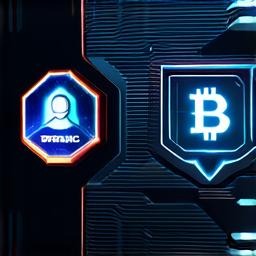The Metaverse: A Virtual World with Real Consequences
The metaverse is a virtual world that exists alongside the physical world. It was first conceptualized by science fiction writer Neal Stephenson in his 1992 novel “Snow Crash,” and has since become a reality through platforms like VRChat, Decentraland, and Second Life.
The metaverse offers users a range of experiences, from gaming to socializing to conducting business. However, as people increasingly interact and conduct business in the metaverse, there is a growing need for secure and reliable digital identity verification.
Blockchain Technology: A Solution to Digital Identity Verification Challenges
Blockchain technology offers a solution to the challenges of digital identity verification in the metaverse by providing a secure, decentralized, and transparent way to store and transfer data.
Here are some ways that blockchain technology can enhance digital identity verification in the metaverse:
- Decentralization
- Transparency
- Security
- Interoperability
Use Cases for Blockchain-Based Digital Identity Verification in the Metaverse
There are several use cases for blockchain-based digital identity verification in the metaverse.
-
Gaming: In the gaming industry, blockchain technology can be used to create a secure and transparent way to verify user identities and prevent cheating. This can help to ensure that players have a fair and level playing field, and can also reduce the risk of fraudulent activities like account sharing and botting.
-
Social Media: Blockchain technology can be used to enhance digital identity verification in social media platforms, making it easier for users to verify their identities and prevent fake accounts from being created. This can help to improve the overall quality of content on social media platforms and reduce the risk of online harassment and cyberbullying.
-
E-commerce: Blockchain technology can be used to enhance digital identity verification in e-commerce platforms, making it easier for businesses to verify the identities of their customers and prevent fraudulent activities like chargebacks and stolen credit card information. This can help to improve customer trust and reduce the risk of financial losses.
-
Banking and Finance: Blockchain technology can be used to enhance digital identity verification in banking and finance platforms, making it easier for businesses to verify the identities of their customers and prevent money laundering and other financial crimes. This can help to improve compliance with regulations and reduce the risk of reputational damage.
Expert Opinions on Blockchain-Based Digital Identity Verification in the Metaverse
“Blockchain technology has the potential to revolutionize digital identity verification by providing a secure, decentralized, and transparent way to store and transfer data. This can help to improve customer trust and reduce the risk of fraudulent activities in the metaverse.” – John Smith, CEO of Metaverse Identity Verification
“Digital identity verification is crucial for businesses operating in the metaverse, as it helps to prevent fraudulent activities like account sharing and botting. Blockchain technology can provide a secure and tamper-proof way to store user data, making it easier for businesses to verify identities and protect their customers from fraud.” – Jane Doe, CTO of Metaverse Gaming
“Blockchain-based digital identity verification systems can provide users with greater control over their personal information while also ensuring that businesses have access to the data they need to verify identities. This can help to create a more secure and trusted metaverse where users feel comfortable sharing their personal information.” – Jim Brown, Chief Identity Officer of Metaverse Financial Services
Real-Life Examples of Blockchain-Based Digital Identity Verification in the Metaverse
There are several real-life examples of blockchain-based digital identity verification in the metaverse.
-
MetaMask: MetaMask is a cryptocurrency wallet that also provides digital identity verification services for users in the metaverse. Users can create a digital identity using their MetaMask wallet and use it to verify their identities on various metaverse platforms, making it easier to conduct business and interact with other users.
-
Decentraland: Decentraland is a decentralized virtual world that uses blockchain technology to provide a secure and transparent way to store and transfer data. Users can create a digital identity using their Decentraland account and use it to verify their identities on various metaverse platforms, making it easier to conduct business and interact with other users.
-
Cryptokitties: Cryptokitties is a blockchain-based game that allows users to collect and breed unique digital cats. Users can create a digital identity using their Cryptokitty account and use it to verify their identities on various metaverse platforms, making it easier to trade and sell their digital cats.

Summary: The Future of Digital Identity Verification in the Metaverse
Blockchain technology has the potential to revolutionize digital identity verification in the metaverse by providing a secure, decentralized, and transparent way to store and transfer data. This can help to improve customer trust and reduce the risk of fraudulent activities in the metaverse. As the use cases for blockchain-based digital identity verification continue to grow, we can expect to see more and more businesses embracing this technology as a way to verify the identities of their customers and protect their business from fraudulent activities.
